These last two weeks, Linden Lab has opened the doors for some of us to have limited interviews with Rod Humble, the freshly-minted CEO of Linden Lab, and the new face at the helm of Second Life, and I was among those given the opportunity to ask some questions. I took the opportunity to ask a number of you just what questions you’d like answered, and managed to squeeze a number of them in on your behalf.
Humble was quite circumspect and reticent in his responses, but to be fair, he’s only been involved with Linden Lab for about three weeks so far, and is far less acquainted with what Linden Lab has done to-date than most of the rest of us.
TMJ: How would you describe Second Life in your own words?
I wouldn’t. Partly because I feel I would be a little silly by naming something that others (such as yourself) have experienced far more than me, but more importantly, I would let our customers do that over time as we figure it out together. I think it has something to do with creativity and how we evolve identity as we interact with others, but I like its undefined nature. I like its ambiguity. That to me feels like it is the beginning of something.
TMJ: Linden Lab has received quite a bit of criticism for its removal of discounts for educators. Given the subsequent increase in educators starting to look elsewhere, how does Linden Lab see the non-profit / education sector fitting into its strategy?
I wasn’t really here for that, so it’s hard for me to comment on past policy, but we certainly value these communities and don’t want to hamper their contributions to Second Life or prevent them from getting the value from it that they currently do.
TMJ: Going back a couple of years, Linden Lab was driving the interoperability agenda to a large extent, with that now being driven primarily by the OpenSim community. Does Linden Lab have any plans to get more substantively into that space and if not, is it just a case of keeping Second Life’s feature set ahead of OpenSim in order to maintain the lead?
Sorry it’s too soon to talk about this. Gotta play the new guy card.
TMJ: To get parochial for a second, back in mid-2007 we were told there would be Australian-based Second Life servers “real soon now”. Can you outline your strategy for managing bandwidth and response times for Second Life outside of the USA?
Yeah that’s a bit too detailed for me right now, but we definitely intend to fully support customers worldwide. How we can do that, we are looking at, but it varies by territory.
TMJ: What do you think Linden Lab’s strengths are?
Customers – we are blessed by customers who talk to us a lot and are not shy. This is a tremendous asset. While obviously we make mistakes and do not please everyone, the level of feedback helps us enormously. Our harshest critics are also our staunchest defenders when others put out misinformation about Second Life. If anything, getting customers’ voices heard coherently is our biggest task. There are way too many places where customers send feedback (or a “tower of babble” as one customer put it). As part of serving folks better the team here is trying to focus that more. The new user groups are a step along that path. Finally, of course, our customers literally make the whole world.
TMJ: Given that you’re approaching things from a different background, what do you think Linden Lab’s biggest mistake has been?
Given the incredible technical and social challenges that Second Life solved, I am not sure I would label much to be a massive mistake. Second Life is technically really impressive – Linden Lab solved some astoundingly difficult technical problems in order to create it – but it’s still much too hard for new users by an exponential factor rather than a small one. There’s a big gap between how experienced customers can enjoy Second Life and the experience of a new user, and that’s a huge opportunity for us. What’s interesting is that in the entertainment space, most companies face these challenges in the reverse order – first you figure out ease of use and accessibility, how to make interacting with it an enjoyable experience, and then you tackle the technical stuff to make it work.
TMJ: What particular thing do you feel you’re bringing to Linden Lab, given your skills and background?
I hope my experience in growing large communities will prove useful to our customers. I care about art and creativity, I express myself through technology. I hope those traits will prove helpful.
TMJ: Linden Lab has spent much of the last decade juggling one or another balance of “fast, easy, fun”, seemingly without really finding a balance point that lasts for more than a few months. Is the problem – do you think – with finding the right balance, with the thrust of the strategy itself, or is there some third angle we’re overlooking?
I wasn’t here, so it would be inappropriate for me to comment on past strategies, but I will say Second Life is a vibrant world that exists today and is enjoyed by millions of people, so it succeeded in many ways. It seems to me that a blended strategy can often be effective. I am used to operating a strategy where you have a general strategy setting the overall direction then initiatives on a 1, 3, 6, 12, and 24 month timeline, which evolve as you work through them. That technique is not particularly revolutionary but it works.
TMJ: Linden Lab has always seemed to most focused on the retention of new users at the apparent expense of existing users. I know this comes across as quite a leading sort of question, and I cannot really see quite how to avoid that I’m afraid, but do you think that situation should continue, be reversed or should some other sort of balance be struck?
I think you can see from my comments above that I strongly believe you need both. Our existing customers should expect us to do a bunch of unsexy backend work to address your valid issues. I would also say that intelligent internet savvy new users are utterly lost with the current experience and discoverability. That for sure will also be addressed in the short term.
TMJ: Have you tried any third-party viewers? If so, do you have any preferences?
I have tried them all they all have positives and negatives. I do have various features I like from each that I think we should learn from.
TMJ: What do you feel is the greatest threat to Second Life?
If we put barriers in the way of creativity and exploration. There are temptations to do this every day. They need to be avoided.
TMJ: What actually are Linden Lab’s goals or direction for Second Life? Nobody’s ever really said, and everyone’s awfully curious.
As I mentioned before, my goal is to enable our customers’ expression and creativity, beyond that, let us see where the journey takes us all. The residents of Second Life are smart, communicative and creative. They are going to take this in all sorts of directions. Our job at Linden Lab is to set solid foundations, create the tools, and then get out of the way as much as we can.
TMJ: Should we expect a change of direction from the Lab and/or for Second Life? If so, how?
Expect to see a focus on customer service, experience, creativity and usability. Second Life should become the natural home for intelligent, creative, and social people online. Whether that is a change or not I don’t really know, but those are my priorities right now.
TMJ: Under Philip Rosedale’s tenure as CEO, Second Life’s motto was “Your world, your imagination”. During Mark Kingdon’s era it was “Your world, your way”. What motto do you feel will be the hallmark of your own tenure at the Lab?
Those both sound good and appropriate to me. I don’t think 3 weeks in it would be appropriate for me to succinctly summarise or change a mission statement or motto.
TMJ: What are your initial impressions about the culture and communications inside the Lab?
It’s great! People are very friendly and committed to wanting to make something important. I am really taken aback by just how much people here care. It is good to see.
TMJ: What are your personal goals while you’re the CEO of Linden Lab?
I would like to meet someone in five years who said “Yeah I joined Second Life just after you joined, and it really meant a lot to me. The people I met, the things I saw. That was important.” If I can achieve that, if a decision I take changes some human beings for the better, then I will be pleased …………Oh and I want to script a fully operational miniature wargames table in Second Life 🙂
TMJ: We don’t want this to be entirely one-sided. What are we – as users and customers – not asking you about that you’d nevertheless like us to hear?
I will read the comments to this interview, what I would most like to know is this: In 2 years time what would you most like to be doing in Second Life, and how would you like to be doing it? The answers to that question would be very helpful indeed.
So, who is willing to speak up in response to Humble’s question: In 2 years time what would you most like to be doing in Second Life, and how would you like to be doing it?
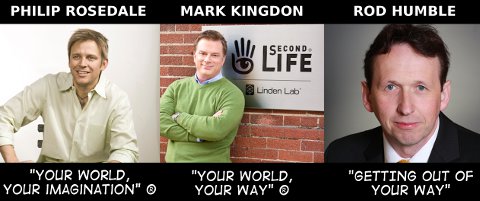



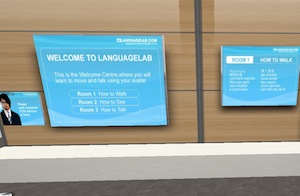
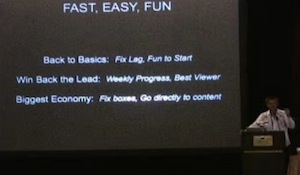
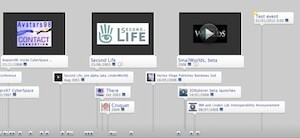
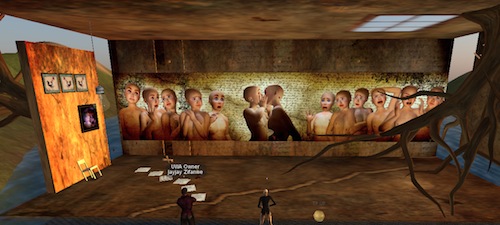
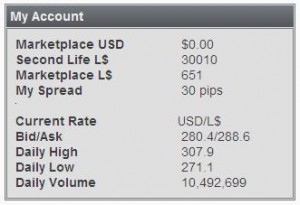
Recent Comments